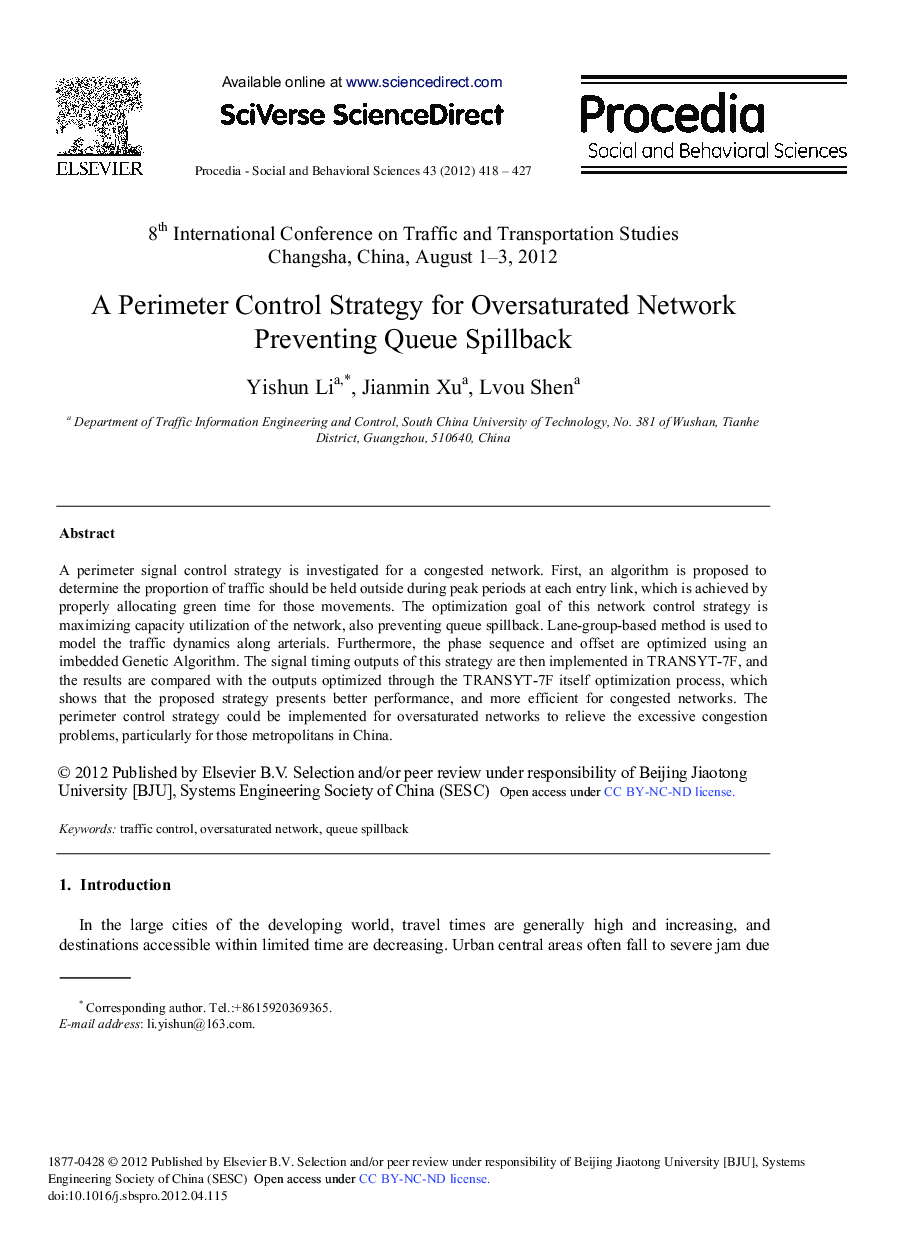| Article ID | Journal | Published Year | Pages | File Type |
|---|---|---|---|---|
| 1122124 | Procedia - Social and Behavioral Sciences | 2012 | 10 Pages |
A perimeter signal control strategy is investigated for a congested network. First, an algorithm is proposed to determine the proportion of traffic should be held outside during peak periods at each entry link, which is achieved by properly allocating green time for those movements. The optimization goal of this network control strategy is maximizing capacity utilization of the network, also preventing queue spillback. Lane-group-based method is used to model the traffic dynamics along arterials. Furthermore, the phase sequence and offset are optimized using an imbedded Genetic Algorithm. The signal timing outputs of this strategy are then implemented in TRANSYT-7F, and the results are compared with the outputs optimized through the TRANSYT-7F itself optimization process, which shows that the proposed strategy presents better performance, and more efficient for congested networks. The perimeter control strategy could be implemented for oversaturated networks to relieve the excessive congestion problems, particularly for those metropolitans in China.
